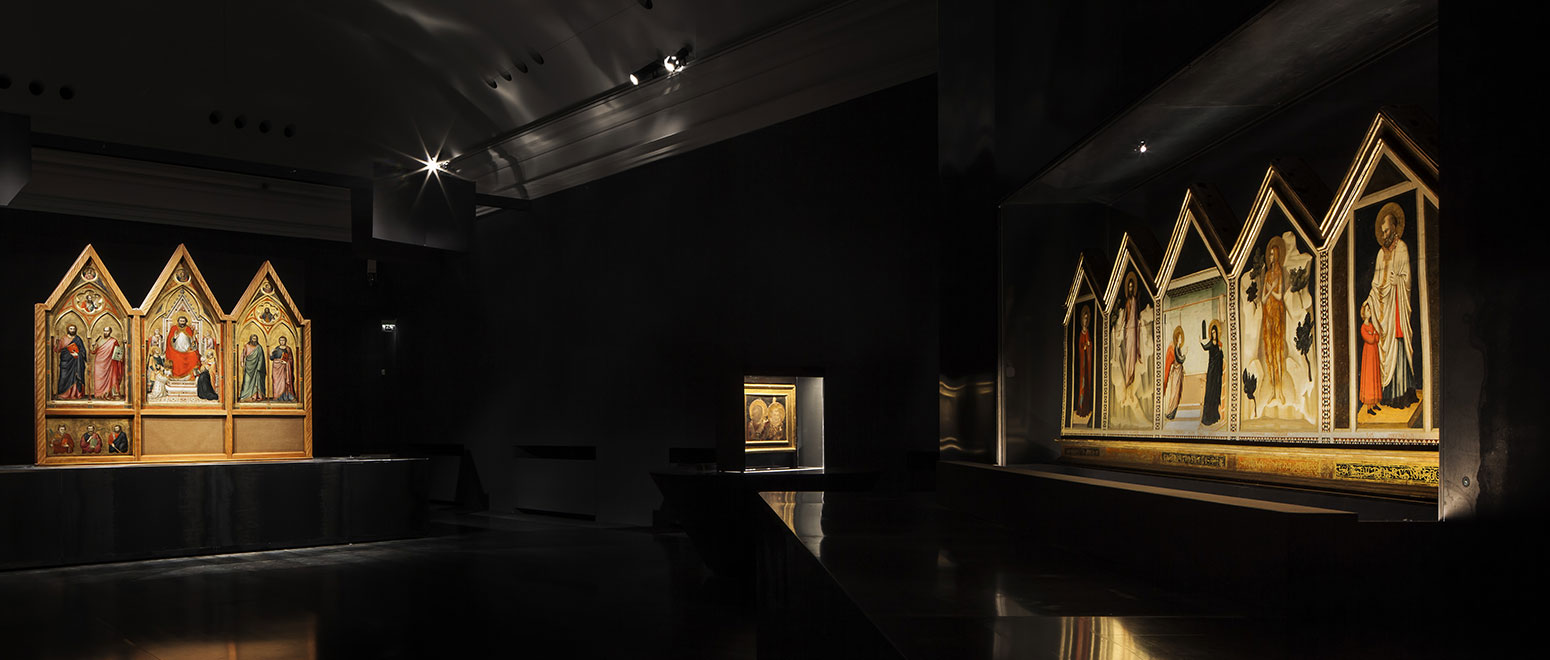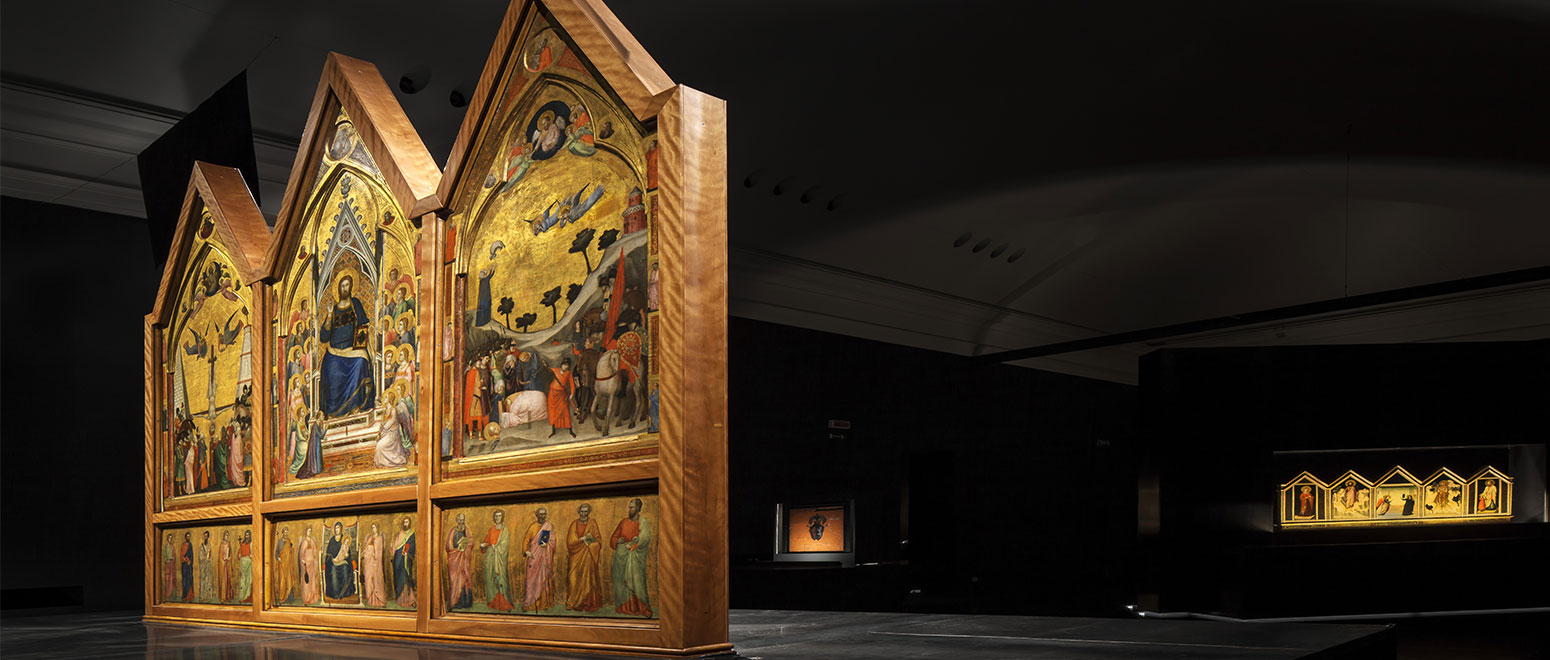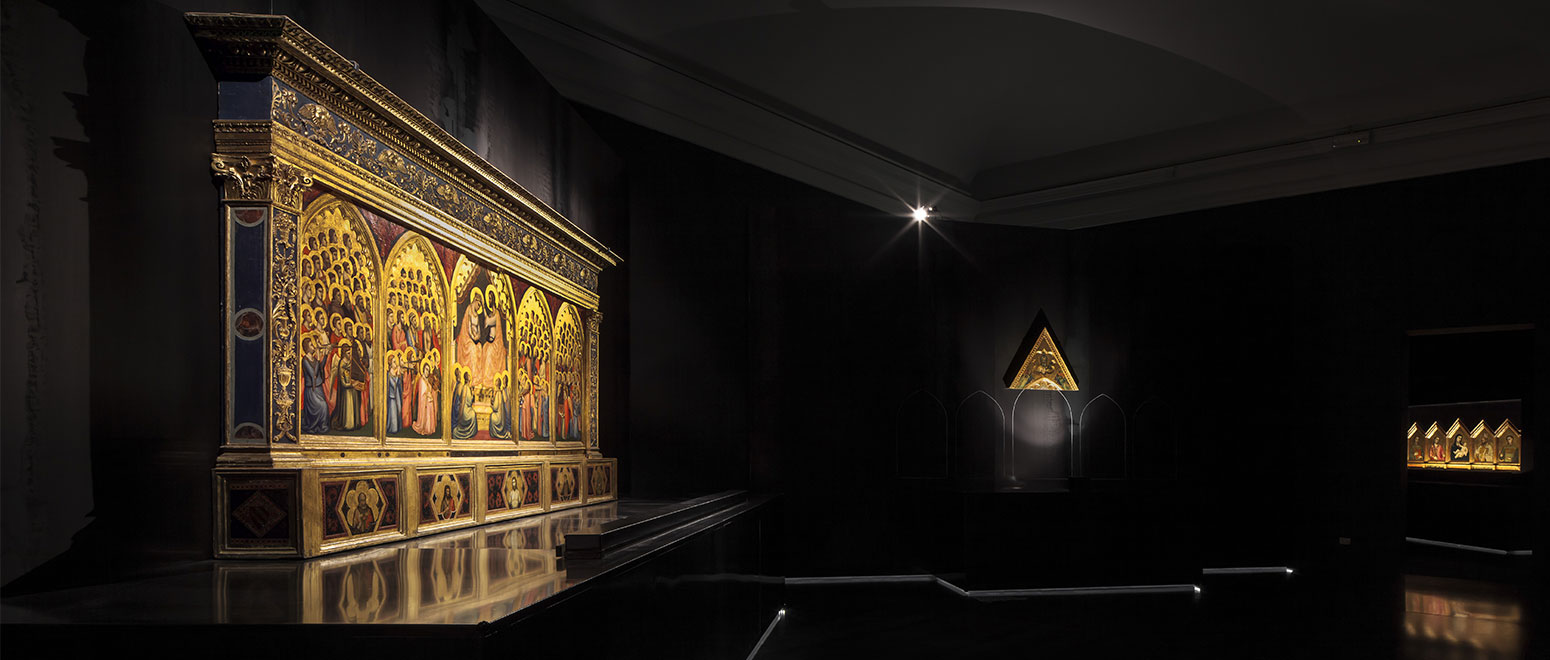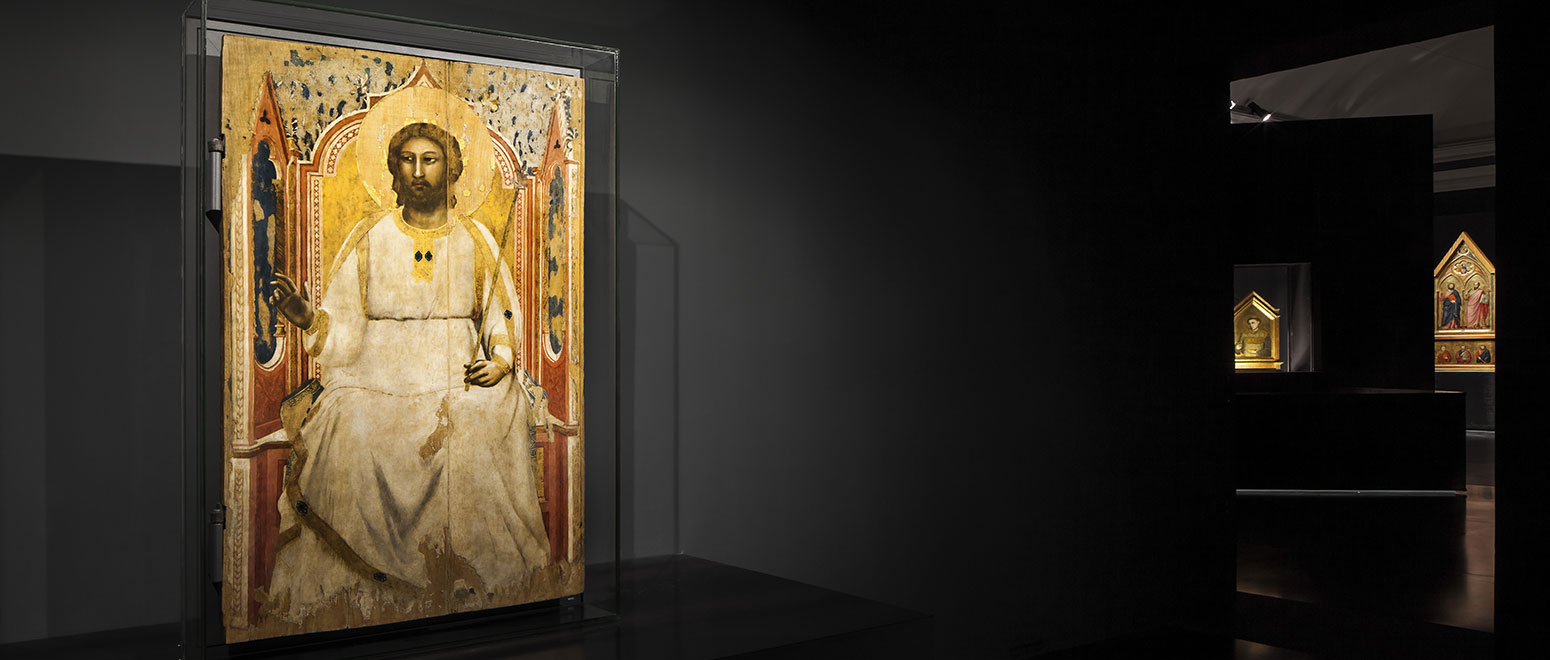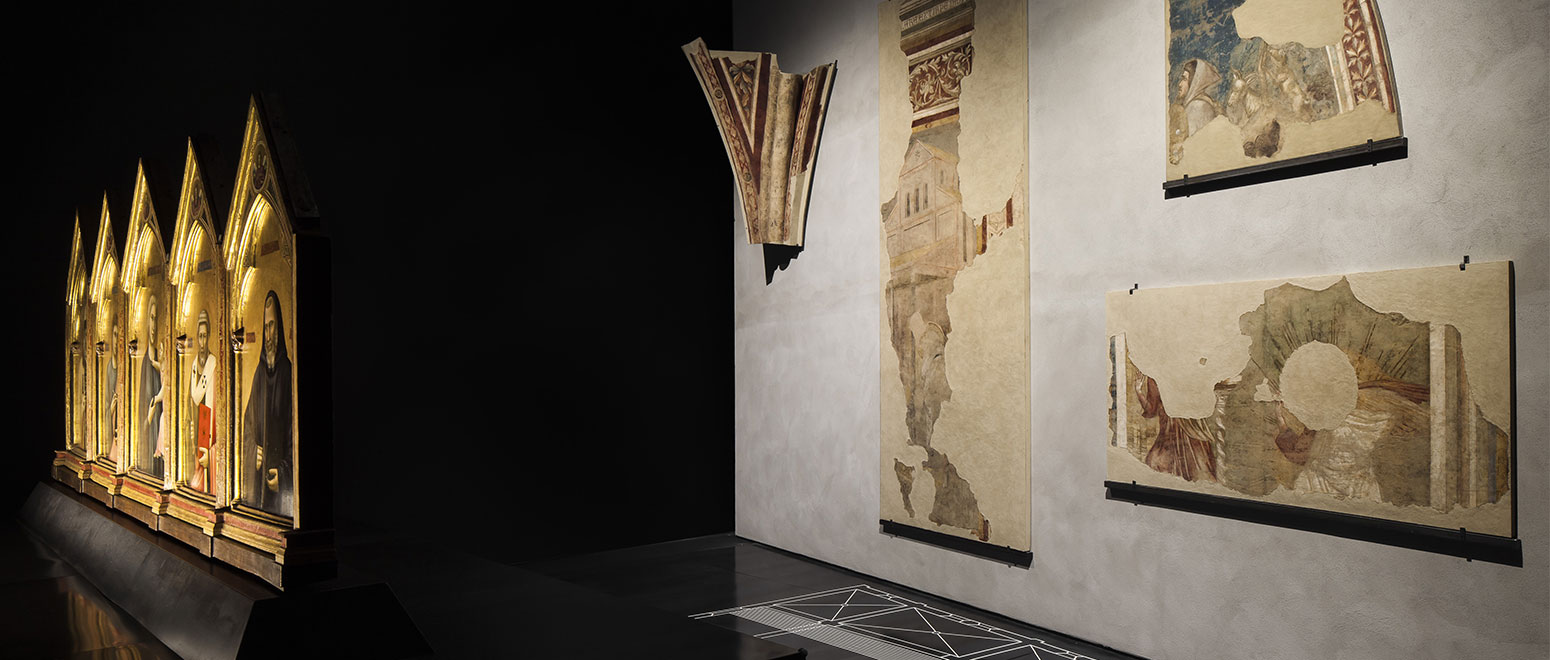From 2 September 2015 to 10 January 2016, Milan’s Royal Palace is hosting “Giotto, Italy” (“Giotto, l’Italia”), a major event set to conclude the programme of cultural initiatives taking place in Milan throughout Expo 2015.
The rooms of the Royal Palace, arranged by architect Mario Bellini, are currently housing a collection of fourteen masterpieces on show for the first time in Milan. The works have been gathered together for the first time to illustrate Giotto’s journey through Italy over more than forty years of extraordinary activity.
The first rooms house the early works with the fragment of the Madonna of Borgo San Lorenzo and the Madonna of San Giorgio alla Costa, the extraordinary painted altarpiece with two heads of the apostles and Saintsfrom St. Peter’s Basilica. These are followed by some of the artist’s more mature pieces, such as the Baroncelli polyptych and the Bologna polyptych, which Giotto painted in the context of the planned return to Italy, in Bologna, of the papal court then in Avignon.
The lighting design developed to showcase these works saw the use of Linea Luce Slim linear luminaires fitted with LEDs delivering a colour temperature of 2700K. The use of specific adjustable joints allowed the beams to be angled for precision illumination of the items on display.
13W and 22W Roll Ios projectors were also employed, with LED sources delivering a light temperature of 3000K and medium and wide beam widths. The use of special barn doors and anti-glare louvers allows for optimum illumination of the works on show, creating a suggestive ambience in which the visitor is immersed.
Completing the room lighting are semi-recessed 10W Yori LED projectors with a colour temperature of 3000K.
The “Giotto, Italy” exhibition, under the high patronage of the President of the Italian Republic, sponsored by the Ministry of Cultural Heritage and Activities and Tourism and the City of Milan’s Department of Culture, with the patronage of the Lombardy Region, is produced and organised by the Royal Palace and the Electa publishing house. Pietro Petraroia and Serena Romano are responsible for the scientific research, and are also the exhibition’s curators. Architect Mario Bellini took care of the exhibition design.






